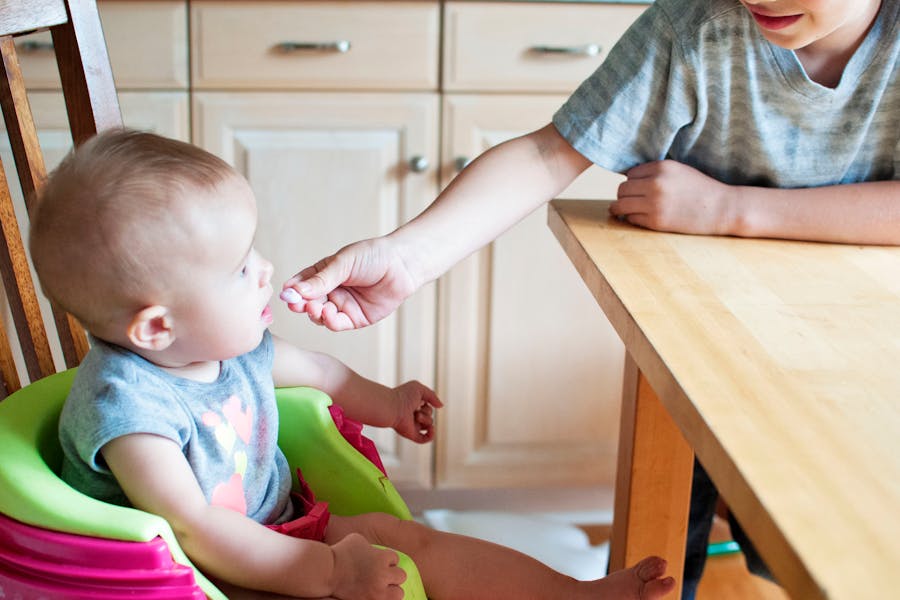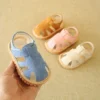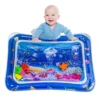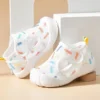Why does my baby make a clicking sound while bottle-feeding? This is a question many new parents ask as they navigate the early stages of feeding their infants. A clicking sound during bottle feeding can be concerning, but understanding the reasons behind it can help alleviate worries and improve the feeding experience for you and your baby. In this article, we explore the common causes of this clicking noise and provide practical solutions. By understanding the underlying issues, you can ensure that your baby feeds comfortably and efficiently.
Why Does My Baby Make a Clicking Sound While Bottle Feeding?
A clicking sound while bottle feeding often indicates that your baby is not latching properly to the bottle nipple. This improper latch can lead to air intake, resulting in the clicking noise. Other causes can include a too-fast or too-slow milk flow, issues with the bottle nipple size, or anatomical factors like tongue-tie. Addressing these issues can help improve your baby’s latch and reduce the clicking sound.
Common Causes Of Clicking Sound During Bottle Feeding
1. Improper Latch
One of the most common causes of a clicking sound during bottle feeding is an improper latch. When your baby doesn’t latch onto the bottle nipple correctly, it may lose suction, allowing air to enter its mouth and creating a clicking noise. Ensuring a proper latch can help mitigate this issue.
An improper latch can occur for various reasons, including the baby’s positioning, the angle at which the bottle is held, or the size and shape of the bottle nipple. It’s essential to check that your baby has a deep latch, with their lips flanged out and their mouth covering a good portion of the nipple base. Adjusting the bottle’s position or trying different nipple shapes and sizes can help achieve a better latch.
2. Nipple Flow Issues
The flow rate of the bottle nipple can significantly impact how your baby feeds. If the milk flows too quickly or slowly, your baby might struggle to maintain a proper latch, resulting in a clicking sound. It’s important to match the nipple flow to your baby’s feeding pace.
Nipples are typically categorized by flow rates, such as slow, medium, or fast. For newborns and younger infants, a slower-flow nipple is often recommended. As your baby grows and their feeding skills improve, you can gradually switch to faster-flow nipples. Observing your baby’s feeding behavior and adjusting the nipple flow accordingly can help reduce clicking sounds and improve feeding efficiency.
3. Tongue-Tie or Lip-Tie
Anatomical issues like tongue-tie or lip-tie can also cause a clicking sound during bottle feeding. Tongue-tie, or ankyloglossia, is a condition where the strip of tissue connecting the tongue to the floor of the mouth is shorter than usual. This can restrict tongue movement and make it difficult for the baby to latch properly. Similarly, lip-tie occurs when the tissue connecting the upper lip to the gum is too tight, affecting the baby’s ability to flange their lips out over the nipple.
If you suspect your baby has tongue-tie or lip-tie, consult a pediatrician or lactation consultant. They can assess your baby’s mouth and recommend appropriate interventions, including exercises or a minor surgical procedure to release the tight tissue. Addressing these anatomical issues can significantly improve your baby’s latch and reduce the clicking sound.
4. Bottle and Nipple Fit
The fit of the bottle and nipple can also play a crucial role in your baby’s feeding experience. Some babies might have preferences for certain bottle shapes or nipple materials. A poor fit can lead to an improper latch and clicking noises.
Experimenting with different bottle brands and nipple types can help you find the best fit for your baby. Look for bottles that mimic the shape and feel of a natural breast, as these are often designed to promote a better latch. Additionally, ensure that the bottle nipple is the right size for your baby’s age and feeding needs.
5. Feeding Position
The position in which you feed your baby can impact their latch and the occurrence of clicking sounds. Holding your baby at the right angle and supporting their head and neck can help them latch more effectively and reduce air intake.
Try to keep your baby upright or slightly reclined during feeding. Ensure that the baby’s head is aligned with the body and not turned to the side. Holding the bottle at an angle that keeps the nipple full of milk can also help prevent air from entering the bottle and causing a clicking sound.
Addressing Common Bottle Feeding Issues
1. Improving the Latch Ensuring a proper latch prevents clicking sounds. Here are some tips to help your baby achieve a better latch:
- Positioning: Hold your baby close, with its head aligned with its body. Support its head and neck to ensure it is comfortable and can latch deeply.
- Bottle Angle: Hold the bottle at an angle that keeps the nipple full of milk to reduce air intake.
- Nipple Shape: Experiment with different nipple shapes and sizes to effectively find one your baby latches on.
2. Adjusting Nipple Flow Matching the nipple flow to your baby’s feeding pace is essential. Observe your baby’s feeding behavior and switch to a different flow rate. If your baby is struggling with a fast flow, consider using a slower-flow nipple to help them manage their milk intake better.
3. Seeking Professional Help If you suspect tongue-tie or lip-tie, consult a pediatrician or lactation consultant. They can assess your baby and recommend appropriate interventions, such as exercises or minor surgical procedures, to improve the latch.
4. Trying Different Bottles Experiment with different bottle brands and nipple types to find the best fit for your baby. Look for bottles designed to mimic the natural breast shape, as these can promote a better latch and reduce clicking sounds.
Why Proper Latch Matters
Ensuring a proper latch during bottle feeding is essential for your baby’s comfort and feeding efficiency. A poor latch can lead to air intake, discomfort, and feeding difficulties. Addressing latch issues can significantly improve the feeding experience.
When your baby has a proper latch, they can feed more efficiently and comfortably. This reduces the likelihood of them becoming frustrated or fussy during feedings. A good latch also ensures that your baby gets adequate milk, which is crucial for their growth and development.
A proper latch can also help prevent issues such as gas and colic. When your baby is latching well, they are less likely to swallow air, leading to discomfort and gas pains. By addressing latch issues and ensuring a good latch, you can help your baby feed more comfortably and reduce the occurrence of clicking sounds.
Tips For A Better Bottle Feeding Experience
Positioning
- Hold Your Baby Close: Ensure your baby is close and supported during feeding. Their head should be aligned with their body for a comfortable latch.
- Maintain Eye Contact: Keeping eye contact with your baby can help them feel secure and relaxed, promoting a better latch.
- Upright Feeding Position: Hold your baby in an upright or slightly reclined position to help them latch effectively and reduce air intake.
Bottle and Nipple Choices
- Experiment with Bottles: Try different bottle brands and nipple shapes to find the best fit for your baby. Look for bottles that mimic the breast shape.
- Check Nipple Size: Ensure the nipple size is appropriate for your baby’s age and feeding needs. Adjust the flow rate if necessary to match your baby’s feeding pace.
Professional Support
- Consult a Pediatrician: If you suspect tongue-tie or lip-tie, seek advice from a pediatrician or lactation consultant. They can recommend appropriate interventions.
- Lactation Consultant: A lactation consultant can provide valuable tips and techniques to improve your baby’s latch and overall feeding experience.
Conclusion
Why does my baby make a clicking sound while bottle-feeding? Understanding the reasons behind this common issue can help you address it effectively. A clicking sound often indicates an improper latch, which can be caused by factors such as nipple flow, bottle fit, or anatomical issues. By ensuring a proper latch, adjusting the nipple flow, and seeking professional help when necessary, you can improve your baby’s feeding experience and reduce the occurrence of clicking sounds. Providing a comfortable and efficient feeding experience is crucial for your baby’s growth and well-being.
FAQs
Why does my baby make a clicking sound while bottle-feeding?
A clicking sound usually indicates an improper latch, leading to air intake during feeding.
How can I improve my baby’s latch during bottle feeding?
Ensure your baby is comfortable, experiment with different bottle nipples, and consult a lactation consultant if needed.
Can tongue-tie cause a clicking sound while bottle feeding?
Yes, tongue-tie can restrict tongue movement, leading to an improper latch and clicking sounds.







